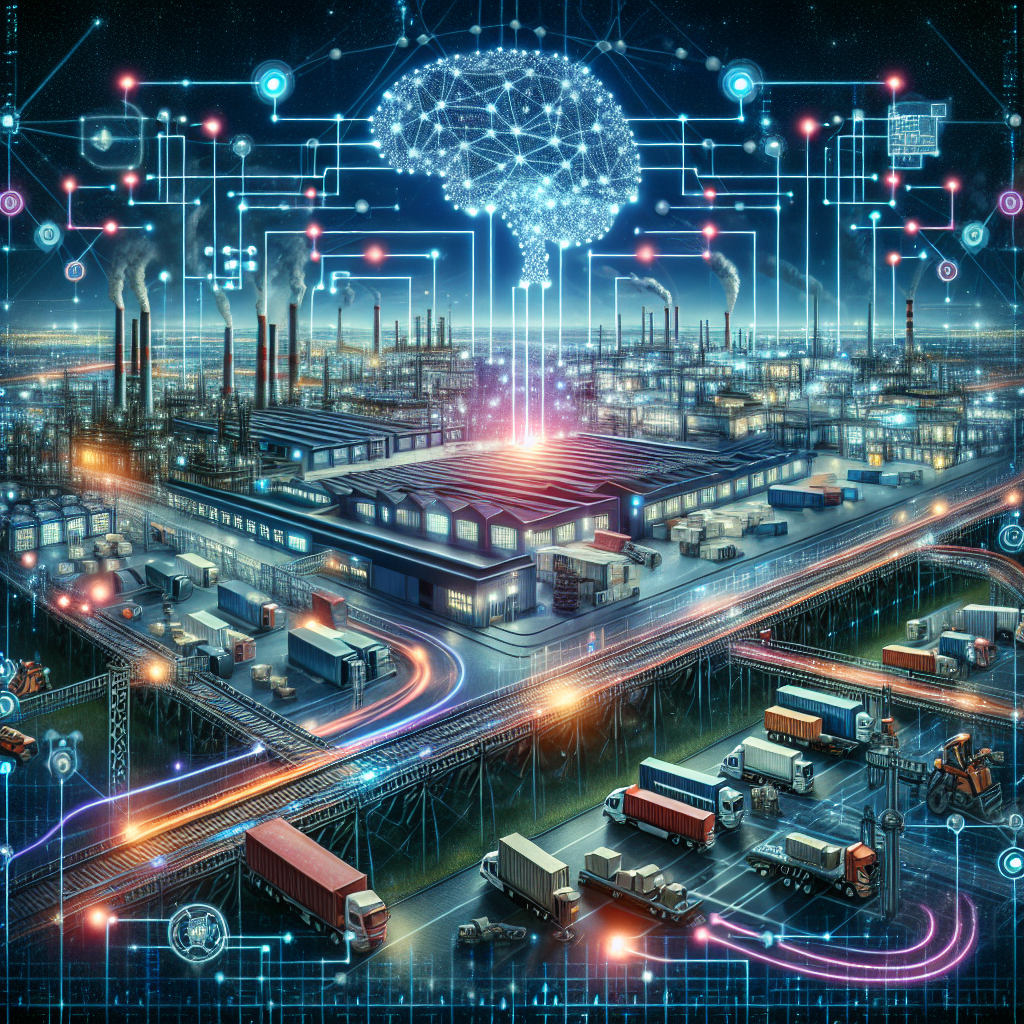AI-Powered Predictive Analytics for Supply Chain Optimization in the Industry
In today’s fast-paced and highly competitive business environment, companies are constantly looking for ways to improve their supply chain operations in order to stay ahead of the competition. One of the key tools that companies are turning to in order to achieve this is AI-powered predictive analytics. By leveraging the power of artificial intelligence and machine learning, companies can now gain valuable insights into their supply chain operations that were previously impossible to obtain.
Predictive analytics involves the use of historical data, statistical algorithms, and machine learning techniques to identify patterns and predict future outcomes. In the context of supply chain optimization, predictive analytics can help companies to forecast demand, optimize inventory levels, improve transportation and logistics efficiency, and reduce costs. By using AI-powered predictive analytics, companies can gain a competitive edge by making more informed and data-driven decisions that can lead to improved operational performance and increased profitability.
One of the key benefits of using AI-powered predictive analytics for supply chain optimization is the ability to forecast demand more accurately. By analyzing historical sales data, market trends, and other relevant factors, companies can develop more accurate demand forecasts that can help them to better plan their production schedules, optimize inventory levels, and ensure that products are available when and where they are needed. This can help companies to reduce stockouts, minimize excess inventory, and improve customer satisfaction.
In addition to demand forecasting, AI-powered predictive analytics can also be used to optimize inventory levels. By analyzing historical sales data, lead times, and other factors, companies can develop more accurate inventory models that can help them to reduce carrying costs, minimize stockouts, and improve overall inventory management. By optimizing inventory levels, companies can improve cash flow, reduce storage costs, and improve overall supply chain efficiency.
Another key application of AI-powered predictive analytics in supply chain optimization is in transportation and logistics. By analyzing historical transportation data, weather patterns, traffic conditions, and other relevant factors, companies can develop more efficient transportation routes, optimize delivery schedules, and reduce transportation costs. By optimizing transportation and logistics operations, companies can improve on-time delivery rates, reduce shipping costs, and improve overall customer satisfaction.
Overall, AI-powered predictive analytics can help companies to achieve supply chain optimization by providing them with valuable insights and actionable recommendations that can help them to make more informed and data-driven decisions. By leveraging the power of artificial intelligence and machine learning, companies can gain a competitive edge by improving operational performance, reducing costs, and enhancing customer satisfaction.
FAQs
Q: What are the key benefits of using AI-powered predictive analytics for supply chain optimization?
A: Some of the key benefits of using AI-powered predictive analytics for supply chain optimization include more accurate demand forecasting, optimized inventory levels, improved transportation and logistics efficiency, reduced costs, and improved customer satisfaction.
Q: How can companies leverage AI-powered predictive analytics to improve their supply chain operations?
A: Companies can leverage AI-powered predictive analytics by analyzing historical data, developing predictive models, and using machine learning algorithms to identify patterns and predict future outcomes. By doing so, companies can gain valuable insights into their supply chain operations and make more informed and data-driven decisions.
Q: What are some of the key challenges of implementing AI-powered predictive analytics for supply chain optimization?
A: Some of the key challenges of implementing AI-powered predictive analytics for supply chain optimization include data quality issues, lack of expertise in data analytics, high implementation costs, and resistance to change within the organization. However, these challenges can be overcome by investing in data quality initiatives, training employees on data analytics, and working with experienced partners to implement predictive analytics solutions.
Q: How can companies measure the success of their AI-powered predictive analytics initiatives?
A: Companies can measure the success of their AI-powered predictive analytics initiatives by tracking key performance indicators such as improved forecast accuracy, reduced inventory levels, lower transportation costs, and increased customer satisfaction. By monitoring these KPIs, companies can evaluate the impact of their predictive analytics initiatives and make adjustments as needed to achieve their supply chain optimization goals.

